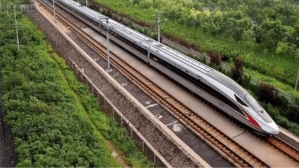By Karunakaran Palaniswamy
A2A Payments can considerably enhance the speed, accuracy, and safety of transactions and can take the overall cost, process, and time efficiency of the payment methods to a different level altogether.
The growing popularity of the account-to-account (A2A) payment has taken the world by storm. It offers a host of benefits to transacting parties with speed, security, and convenience being the trump cards of the technology. As the A2A system facilities the direct transfer of money between two accounts, the method eliminates the need for intermediaries that are otherwise an integral part of conventional payment methods. Not only does this save time but also reduces transactional costs while offering a more secure way of conducting transactions. No wonder, the global A2A payment market has grown significantly and surpassed the market cap of $525 Bn in 2022. Further, the segment is likely to grow with a 13% CAGR through 2026, implying strong future growth prospects for technology around the world.
A2A adoption in the US
Despite strong global traction, the adoption rate of A2A in the US market is not very encouraging. In fact, the businesses and consumers in the world’s largest economy are proving laggards when it comes to adopting alternative methods of payment such as A2A among others. While the reasons could be many, we take a deep look into the prominent ones which are keeping A2A from realising its true potential in the US market. In addition, we also analyze how the use of blockchain technology can help A2A in addition to discussing other methods that can push the popularity of the payment system to a new level in the US.
Reasons for Falling Behind
With $23 Trillion, the US is the world’s largest economy with a strong presence in the areas of technology development, software export, artificial intelligence, and manufacturing. The country is the global technology leader although its slow switch to the A2A payment is somewhat baffling to many FinTech experts. While many attribute this to the strong grip that the conventional payment system still has over consumers’ psychology, others blame it on the regulatory stance and apathy of the financial ecosystem. In addition, the high reliance on Debit/Credit cards is also keeping the charm of antiquated payment systems alive among US consumers. That said, the tide has started turning with innovative payment systems started demonstrating their utility among the stakeholders. Whether it’s the FedNow system, an instant payment infrastructure launched by the Federal Reserve or diverse payment methods offered by Klarna and Afterpay, consumers are turning towards new payment platforms and formats.
Integrating Blockchain in A2A System
The underlying characteristics of blockchain that enhance speed, security, and transparency can prove instrumental in widening the appeal of A2A payments in the US. Just like the real-time payment system, blockchain can instantly settle payments between the transacting parties. This coupled with its immutable nature, cryptographic protocols, and high-security credentials makes the open ledger a natural partner for A2A. Further, by emphasizing higher cost efficiency and time-saving of the blockchain, banks and financial institutions can easily overcome the cultural resistance that hampers the adoption of new payment systems among consumers.
A2A System: Future of Transaction in the US
A2A system can completely transform the way monetary transactions are processed in the US and across the globe. Following is a list of enablers whose integration into the A2A can make it an ideal choice for processing payments in the US and around the globe:
1) Real-Time Settlement: The convenience and security of the A2A can be significantly enhanced by augmenting the system with real-time settlement capability. By allowing instant transfer and receiving of money, merchants can be benefited from real-time access to funds, lower return risks, and higher payment efficacy.
2) Integrated Capabilities: The seamless working of A2A payment warrants equally efficient capabilities at the e-commerce and point-of-sales points. It is only when the integration of resources and technologies with the A2A system is achieved, the desired results on speed, accuracy, and efficiency can be obtained by the merchants and sellers.
3) Offering Incentives: Encouraging customers to adopt A2A via banks can significantly enhance the appeal of the payment system. It can be done through tying the payment method with discounts, loyalty points, and rewards along with a host of other promotional measures. Petrol stations in the US have already taken the lead by offering discounts to customers who choose to make payments through automatic clearing house (ACH) apps. 4) Regulatory Push: An open and constructive policy framework is essential for the widespread adoption of A2A in the US. To create such a conducive environment, a regular exchange of ideas between administrators and industry stakeholders is warranted as the process will ensure the creation of holistic benefits for all stakeholders who are part of the A2A payment ecosystem.
The author is senior director, delivery and technology, MSys Technologies









